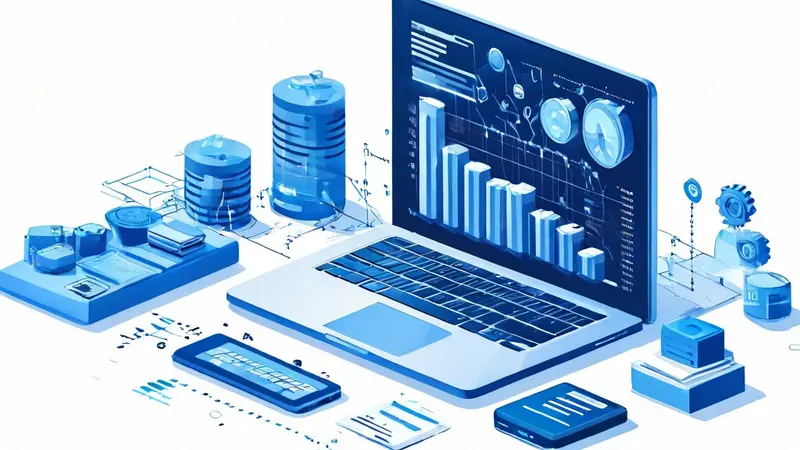Office automation system (OA) plays an increasingly important role in modern enterprise management, which greatly improves office efficiency and collaboration capabilities. The editor of Downcodes will explain the core functions of the OA system in detail and answer some common questions. This article will delve into the four key modules of document management, email system, information release and workflow management to help you fully understand the operating mechanism and practical application of the OA system.

OA system refers to Office Automation System. Its main purpose is to realize information processing and office automation in the office environment by using computer and network technology to improve work efficiency and quality. The main functions of the OA system include: document management, email system, information release, workflow management, etc. Among them, the workflow management part is one of the cores of the OA system. It improves the organization's work efficiency and quality by defining, simulating, executing, monitoring and optimizing business processes.
Document management is an important part of the OA system, which involves the creation, editing, storage, retrieval and sharing of documents. An effective document management system can help enterprises overcome the problem of information islands and ensure the timely sharing and effective use of information.
In terms of document management, OA systems usually provide a centralized management platform where employees can easily create new documents or edit existing documents. In addition, the system can also classify and archive documents to facilitate users to quickly retrieve the required files. A good version control function can ensure that the modification history of the document is correctly saved, avoiding conflicts and information loss during modification.
The email system is one of the basic tools used for internal communication in the OA system. It not only supports basic email sending and receiving functions, but may also integrate advanced functions such as schedule management, meeting reservations, and task allocation, which greatly improves office collaboration and efficiency.
Through the email system, employees can receive timely notifications and information from the company, and can also communicate and collaborate with colleagues at work conveniently and quickly. In addition, some advanced OA systems may also provide email encryption and security mechanisms to protect the security and privacy of communications.
The information release system is an important part of the OA system for announcements, notifications and information sharing. Through the information release system, management can release important information and notices to the entire organization in a timely manner, ensuring that every employee can quickly obtain the latest company dynamics and related policies.
This system is not limited to the release of text information, but may also support the release of multimedia information such as images and videos, making information delivery richer and more vivid. More importantly, information release systems often have permission management functions. Employees at different levels can view corresponding levels of information based on permissions, ensuring the security and pertinence of information transmission.
Workflow management is the core of the OA system. It manages the enterprise's business processes electronically, thereby improving the standardization and automation level of business processing. Workflow management includes process design, task allocation, process scheduling, progress tracking, and performance evaluation.
Through the workflow management system, enterprises can standardize and template complex workflows, thereby simplifying business operations, reducing human errors, and improving work efficiency. Employees can clarify their responsibilities and task progress based on their own task lists and work flow charts, and managers can also monitor and evaluate project progress and employee work performance in real time through the system.
Through the integration and use of these main functional components, the OA system provides enterprises with a comprehensive and automated office environment, greatly improving office efficiency and management quality. With the continuous advancement of technology and the deepening of its application, OA systems will continue to play a key role in the digital transformation of enterprises.
1. What is an OA system? OA system is the abbreviation of "Office Automation System", which refers to a system that uses computers and communication technologies to automate and manage processes, documents, and information in office work. It can help enterprises achieve information sharing, improve office efficiency, simplify processes, reduce costs and other goals.
2. What are the common functions of OA systems? Common OA system functions include: email, document management, address book, schedule, task management, meeting management, workflow, knowledge management, report statistics, etc. These functions can assist employees in arranging and collaborating work, improving work efficiency and collaboration efficiency.
3. What are the benefits of using OA system? The use of OA systems can bring many benefits, such as: improving work efficiency and reducing duplication of work; improving communication efficiency and realizing instant information transmission; facilitating information management to avoid file loss and confusion; providing comprehensive data statistics and analysis to help enterprises Decision making etc. In short, the advantage of the OA system is that it can centrally manage various office tasks, improve work efficiency and information sharing.
I hope that the interpretation by the editor of Downcodes can help you better understand the OA system. With the advent of the digital era, OA systems will continue to empower enterprises and help them achieve more efficient and smarter office models. I believe that in the near future, OA systems will be more complete and popular.